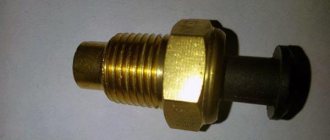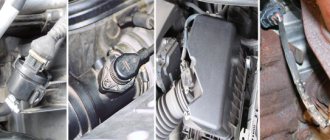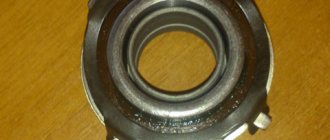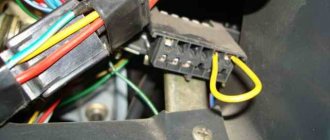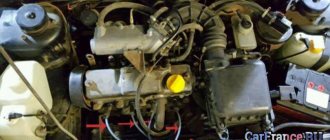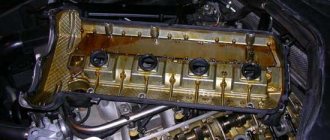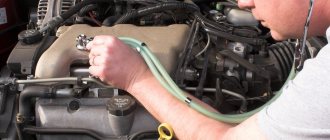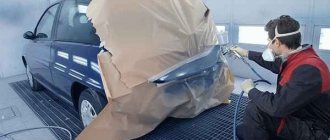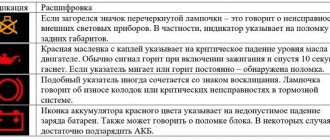Error Code P0171 occurs when the mixture is too lean, when there is not enough fuel and too much air. This mixture occurs when the engine is taking in too much air from the environment and/or the fuel system is not injecting enough fuel. This state of the mixture entails misfires, delays in the car's response to the accelerator, jerking during acceleration, idle failures, and unstable engine operation. In engine management systems Euro 2 and higher, the lambda probe controls the quality of the mixture in which there should be 14.7 parts of air per part of fuel. When the permissible range for increased air presence is exceeded, which is 20-30% of the norm, error P0171 appears.
Mixture indicator standards and possible consequences
For cars with the Euro-2 standard and higher, a special sensor was installed on the engines - a lambda probe. He controls the quality of the mixture produced. According to the standard, it is established that for one part of fuel there are 14 parts of air. If there is a minimum deviation of 0.25, the on-board computer will generate an error about a lean mixture. When an over-lean mixture enters the engine, not only failures in operation occur, but also the possibility of engine overheating. The rev speed is quite low. In addition, if you do not carry out high-quality diagnostics and do not eliminate the cause of the formation of a lean mixture, the consequences will become much worse:
- overheating of the power unit;
- burnout of piston rings;
- valve burnout;
- low engine thrust;
- burnout of pistons;
- increased fuel and coolant consumption.
What to do if there is an error
The causes of a lean mixture on the injector (including VAZ 2110), if detected, can be eliminated independently, but the best solution would be to take the vehicle to a specialized workshop, where auto mechanics will carry out high-quality diagnostics and will be able to detect other malfunctions in the operation of the vehicle. It is also worth contacting a service station because most drivers simply do not know how to control and adjust the composition of the air-fuel mixture being created. As a rule, on injection engines and carburetor engines, the car owner has this opportunity. An example is adjusting the throttle opening angle. To do this, it is enough to change the position of the locking ring, alternately moving it along the special grooves of the damper.
Self-adjustment
Most drivers are very glad that they know how to adjust the throttle angle, as they are completely confident that this will help regulate fuel consumption. In addition, some resort to flashing the vehicle's electronic control unit. In order not to damage some units or ECUs, it is worth seeking help from qualified technicians who can, using special programs, without affecting the quality of the mixture, improve some of the car’s performance. Otherwise, the risk of “killing” the engine of your vehicle increases. Thus, a lean mixture is formed on the injector, the reasons (2114 is no exception) for which lie in the independent adjustment of the angles or the intervention of an inexperienced car owner in the operation of the engine system.
Fuel system malfunction
Other causes of a lean mixture on the injector are due to improper operation of the vehicle's fuel system. As a rule, operational disruptions occur due to low-quality fuel, which is filled at little-known gas stations. One of the options for unstable engine operation and the formation of a lean mixture is clogged fuel cells of the car. In such cases, there is a misfire in the engine. As a result, the car may jerk. To prevent this from happening, it is necessary to purchase fuel only from trusted gas stations. Both fuel elements should also be replaced in a timely manner. Remember that one filter is presented on the injector in the form of a mesh and is installed directly into the fuel pump. The second element is most often located near the tank on the bottom of the car, less often in the engine compartment. To avoid over-leaning the mixture, it is necessary to change them at least once every 40,000 km. Sometimes this figure may be lower, since it all depends on the quality of gasoline.
Symptoms of a lean fuel assembly
ATTENTION! I found a completely simple way to reduce fuel consumption! You do not believe me? Even a mechanic with 15 years of experience didn’t believe it until he tried it. Now save 35,000 rubles a year on gasoline! Know more"
A fuel mixture or group is a certain amount of gasoline and air. A lean mixture means there is less fuel in the fuel block than needed. There is also an enriched mixture, when there is much more fuel.
The presence of a low-quality fuel assembly can be determined by its characteristics:
- occurrence of misfires;
- delay in engine response during acceleration and sudden pressing of the accelerator pedal;
- engine interference;
- automatic shutdown of the internal combustion engine at idle;
- twitching when maneuvering or accelerating;
- change the engine sound when starting;
- unstable operation of the engine as a whole.
As you can see, the presence of a spent fuel group can only be determined by signs of engine operation.
Clogged injectors
If you do not change the fuel elements of the car system on time, a lean mixture may form on the injector, the reasons for which will lie in the incorrect operation of the injectors. That is, fuel is supplied, but supplied in fairly low quantities. An injector is a special device related to the injection system of a car. There are many elements: electromagnetic, electrohydraulic or piezohydraulic. Vehicles with gasoline engines use electromagnetic parts.
To solve the problem, you can restore the previous injection by washing the injectors, which is carried out only using special equipment.
By the way, to avoid contamination of fuel filters and injectors, you should clean the fuel tank at regular intervals, since there is a large accumulation of dirt, sand or other substances there.
Lean mixture error P0171
Error code P0171 occurs when the mixture is too lean, when there is not enough fuel and too much air. This mixture occurs when the engine is taking in too much air from the environment and/or the fuel system is not injecting enough fuel.
This state of the mixture entails misfires, delays in the car's response to the accelerator, jerking during acceleration, idle failures, and unstable engine operation. In engine management systems Euro 2 and higher, the lambda probe controls the quality of the mixture in which there should be 14.7 parts of air per part of fuel. When the permissible range for the increased presence of air, which is 20-30% of the norm, is exceeded, error P0171 .
Signs of error and diagnostic methods
The error is diagnosed after the Check Engine warning light appears on the vehicle's dashboard. The error is read using diagnostic equipment: a scanner, a laptop with a program installed, etc. The error is often accompanied by signs that may indicate problems with the car’s engine.
The symptoms are felt especially strongly in transitional modes - when accelerating and decelerating, as well as at idle. As the engine warms up and when driving smoothly, the manifestations of a lean fuel-air mixture subside, and the engine begins to operate almost in standard mode.
How does a car behave on a lean mixture?
When operating on a lean mixture, the car engine idles unevenly, overheats due to the lower combustion rate of such a mixture, and popping noises are heard in the intake pipe. The car itself can slow down and slowly gain momentum under load.
During long-term operation with a lean mixture, excessive fuel consumption occurs due to a slow increase in speed, as a result of which you have to operate the car in low gears. A lean mixture appears as a result of an imbalance in the supply of air and fuel for mixing with a large amount of air.
Causes of DTC P0171
Since the mixture can be lean due to too much air or not enough fuel, we will look at these two problems separately.
Reasons for the increase in air quantity:
Fuel shortage can be caused by the following factors:
Why does P0171 appear?
The reasons for too much air getting in are:
- Dirt in the air flow sensor, as a result of which it cannot correctly take into account air flow;
- Vacuum leak;
- The EGR valve, which is responsible for exhaust gas recirculation, does not close tightly enough and allows air into the intake manifold;
- High air flow through the EGR valve due to a faulty EGR differential pressure sensor.
If the cause of a lean mixture is a lack of fuel, then the following malfunctions:
- Insufficiently powerful fuel pump;
- Fuel filter with resistance;
- Dirty fuel injectors;
- Leak in the fuel pressure regulator. To find the cause of the P0171 error, you need to outline the reasons why a lean mixture enters the engine and the check engine shows such an error. After this, a sequential plan for checking the car is drawn up:
- Injectors and fuel supply system;
- Tightness of intake and exhaust manifolds and accompanying hoses;
- Air and oxygen flow sensors (mass air flow sensor and lambda probe).
avtoexperts.ru
I had to personally face such a problem as a lean mixture and find out all the reasons. Therefore, I want to tell you from personal experience what to pay attention to first. Today we will learn at the beginning what a lean mixture actually is and how it affects the engine. We will also find out what signs and causes it is accompanied by.
What it is?
First you need to understand the difference between a rich and lean mixture. So, everyone understands perfectly well that fuel consists not only of “fuel”, but also of a certain proportion of air. Depending on the mode, type of operation of the internal combustion engine and a host of other factors, mixing of the listed components can be done in different proportions. If you take average portions, then it is within 1 kg. gasoline for 14-15 kg. air. That is, these are average indicators at which the motor operates stably.
But, if, for example, the amount of air is reduced, say to 12 kg, then the proportion of gasoline increases accordingly. But, at the same time, power and fuel consumption increase. If you reduce the amount of air further, the mixture becomes enriched, that is, rich.
In the case when the amount of air increases, we observe the opposite effect when the fuel mixture becomes lean. Accordingly, power is reduced and fuel consumption is reduced.
That is, a lean mixture is when:
Signs of a lean mixture
There are actually many signs, and they may even resemble problems associated with other nodes. So, we can highlight:
• Unstable idle operation. Here you should also pay attention to the idle air control, it may be clogged, etc.
• When trying to move away, the internal combustion engine stalls.
• When you press the accelerator pedal, there is no reaction or it is very weak.
• The motor does not pull even without load.
For example, if you take carburetor cars, the car often begins to “sneeze” if the mixture is lean. Popping noises occur at the injectors and explosions occur in the exhaust system.
In addition, the color of the candles will help determine which mixture, normal, lean, or vice versa, rich. But there is a nuance here; this is determined only on injection engines. For example, if the color of the spark plugs is brownish, then the internal combustion engine is in order. But, if the shade is light, white, it indicates that there is too much air in the fuel mixture, which means the mixture is lean.
If the color of the candles is dark, but on the contrary there is a lack of air.
But the exact cause is difficult to determine only by soot. In addition, carbon deposits may indicate that the ignition is not set correctly; that’s another question. In general, a pattern has long been noticed among motorists: if the pops in the exhaust manifold are short and seemingly single, then this indicates a rich mixture. But if the explosions and pops are long and frequent, then it’s definitely a poor mixture. If the latter, then the car will begin to stall, jerk, and may not start at all.
Causes and diagnosis
When computer checking a car, the scanner often records an error such as a lean mixture under code P0171. Error codes from various sensors may also indicate problems with fuel generation. So what causes more air or less fuel?
1. Air sensor, also known as mass air flow sensor.
First of all, you need to pay attention to all kinds of sensors. Most often, problems with a lean mixture appear when the mass air flow sensor is simply clogged or “died.” For example, if it is contaminated, then the “brains” react to the readings with a slowdown, which is why an incorrect “command” is sent to the injectors to supply air in an increased volume. As a rule, the ECU reacts to malfunctions with the mass air flow sensor if, over a certain period of time, the supply of more air was noticed. For example, the error code on domestic Ladas is P0103.
2. Problems with the EGR valve.
This valve is responsible for returning a certain amount of exhaust gas to the cylinder. The valve receives signals from the ECU, which, in turn, receives and analyzes readings from the coolant temperature sensor, oil pressure, throttle sensor, intake manifold temperature sensor, etc. That is, if any of the sensors listed above provides incorrect data, the ECU may interpret this incorrectly and send a signal to the EGR valve, which will cause the latter to open for a longer time and add more exhaust gases than necessary. But often the reason is more banal: the valve is broken, clogged, which is why it does not work correctly. Error code PO404.
3. Problems with the intake system, malfunction of the throttle position sensor (TPS).
Diagnose the throttle valve; it may be dirty or not working correctly. Remember that the position of the damper must correspond to the temperature of the engine (if the damper is automatic) or the position of the gas pedal. On a hot internal combustion engine, the damper should be open, on a cold one it should be turned at a certain angle, depending on the model of the car. Accordingly, if the damper is not working correctly, then the air damper is generating the wrong amount of air. Check the TPS, error code is P2135.
4. Absolute pressure sensor (MAP) in the intake manifold. It is responsible for determining air density and forming the fuel mixture. If incorrect values are supplied to the ECU, then the mixture can be either lean or rich. The codes differ depending on the machine, P0107, P0108, P0106, etc.
5. Idle speed control. It is not uncommon for air to be sucked in at the places where the DXH is installed, if the connection is not sealed, the sensor is dirty, and the like. Exit, check if the fit is tight, clean the IAC, replace if necessary. When scanning, the following error codes may appear: P1509, P1513, P1514, etc., related to this sensor.
6. Problems with the timing belt. Pay attention to how the marks are set, what condition the rollers are in, etc. Check the tensioner system as a whole.
7. Oxygen sensor, also known as lambda probe. Malfunctions of this sensor often cause the appearance of a lean mixture. A burnt-out catalyst is also recorded by the scanner, like a lean catalyst. Check it too, diagnostics usually gives codes - P0135, P0134, P0136, PO133.
8. Check the functionality of the fuel pump; it may not pump enough fuel. At the same time, check the pressure regulator in the rail for leaks. It would be a good idea to check the fuel filters.
How is the check carried out?
Check sensors . One of the most common causes of the P0171 code is a clogged air flow sensor (MAF). The sensor's response to changes in air flow may be slow due to dirt accumulated on its wire. It can also be contaminated by fuel vapors that escape through the intake manifold and throttle body when the engine is not running. These vapors deposit a waxy layer on the sensor wire, which causes a signal to be sent indicating that there is not enough air in the mixture. And the engine control unit, in turn, does not add fuel when the amount of air increases and the overall balance of the mixture is disrupted. All this leads to a lean fuel mixture and the appearance of error P0171. Often, along with this error, errors p0100 or p0102 may appear, which clearly mean a malfunction of the mass air flow sensor. To solve the problem, the sensor itself must either be cleaned using a special cleaner for electrical appliances or carb cleaner (spraying onto the sensitive element), or a new one must be installed.
How to diagnose and fix
Eliminating the error will require checking all possible causes for its occurrence. Diagnosing the causes of error P0171 also includes finding other engine errors. For example, if code P0171 is accompanied by error code P00102 (low signal level of the mass air flow sensor), then you need to “dig” in search of a fault in the direction of the mass air flow sensor. In a similar way, you can find other faulty sensors that are responsible for the appearance of error P0171.
If the error is caused by a lack of fuel volume entering the combustion chambers of the engine, then it is necessary to check the fuel system.
Occasional occurrence of the P0171 code can be caused by other reasons: poor fuel quality, poor controller grounding, damaged sensor harness, or poor connection between the harness and the controller.
Injector problems
You don't have to be an expert to understand that the problem here lies in the operation of the injector. And first of all, before we start studying lean mixture, let’s try to find out what it even is. This is important only because such a reason can lead to expensive repairs to the car.
Why do jerks happen?
The presence of jerks while the car is moving is a problem that directly or indirectly indicates the presence of problems with the engine, or more precisely, a loss of power. In total, there are two features that affect the development of power in the engine - fuel supply and the ignition system.
If with the ignition, everything is more or less clear, due to the inspection of the generator, spark plugs, ignition wires for faults, and the battery for charge, then in the case of the ignition system everything looks much more complicated.
High voltage wires are marked with arrows
Inspecting the condition of the spark plugs
To ensure a successful engine start, it is necessary to mix the fuel and air mixture in ideal proportions; this is what the injector is responsible for.
It happens that when mixing these proportions, a malfunction occurs, and the mixture turns out to be rich or lean.
A clear example of the air-fuel mixture ratio.
In order for the car to obtain maximum power when burning fuel in the cylinders, it is necessary to bring its indicator to the level of 0.85 - 0.9, when excess oxygen = > 1 (at this indicator, gasoline burns completely without residue - approx.), and when there is a lack of oxygen, and the readings are equal. The main reasons for a lean mixture
The main and most important symptom that the system has a lean mixture is a stalling or unstable engine. And if the mixture is very poor, then it is possible that it will not start at all.
The cause of these problems is most often a clogged air filter (see “replacing the air filter”), clogged injectors, wear in the fuel pump, and there may also be air leaks into the system. All these reasons are, one way or another, related to the stable operation of the engine.
Causes of excess air
If, after carrying out this work, instability is also observed in the operation of the system, pay attention to possible places where excess air occurs, since it also affects the leanness of the mixture and the main reasons lie in the following:
- Presence of dirt or marks on the mass air flow sensor.
And in order to eliminate the above reasons, it is necessary to conduct a thorough diagnosis.
Troubleshooting
Mass air flow sensor - the air flow sensor can become clogged due to natural reasons, as well as from vapors that come from the throttle valve while the car is not running. And then, over time, accumulating in a thick layer on the thin thread of the sensor, forcing it to send inaccurate data to the ECU, which in turn negatively affects the parameters of air flow and flow into the system.
When diagnosing its malfunction, it is best not to rush into purchasing, since it costs a lot of money, but it is best to check its performance on a known working device. And when it is established that the reason lies in it, then you can try to clean it, or then replace it with a new one.
Vacuum leak
Vacuum leak - these words mean any form of air leaks, i.e. suction into the system, primarily through the manifold gasket or hoses.
The vacuum pump and return hose may cause
Pay attention to the condition of the pipe leading from the air filter to the throttle valve, and the hoses that go to the crankcase ventilation. There should be no visible damage to them, as well as large cracks through which excess air could enter.
In addition to all of the above, you can check the engine oil dipstick and the oil filler cap on the neck, because if these connections are not completely closed, they can cause the appearance of that same excess air.
Search for air leaks from a smoke generator
For a smoke generator from a cigarette we will need:
I explain in detail how to assemble all this into a finished structure in the video below. We connect a ready-made smoke generator instead of a vacuum amplifier and begin to pump smoke into the intake manifold, simultaneously checking all the connections and hoses to see if smoke is coming out of them. The appearance of smoke indicates a leaky connection and, accordingly, a possible air leak.
Also, separately from the intake manifold, you should check the vacuum brake booster and the adsorber valve. It is quite easy to check the vacuum seal - just disconnect it from the intake manifold, install a plug and see if there are any changes in the operation of the engine. If it starts to work smoothly and well, then the problem is in the vacuum seal - you need to check the hose itself; if it is intact, we buy a new vacuum seal.
The adsorber valve can be checked just as easily - we disconnect the hose from the throttle assembly and blow into it - it should not blow, i.e. the valve should be closed.
If it blows, the valve must be replaced. We figured out the main reasons for air leaks. Now the second point - LOW fuel.
The first thing to check here is the pressure in the fuel rail. It should not be lower than 3.8 kg/cm2 at XX.
If it is lower and when you change the gas it drops even lower, this means that the fuel pump has “died”. In such a situation, you need to replace it and see what happens. Also, check the condition of the mesh and fuel filter.
The second is clogged injectors. Through clogged injectors, less fuel may enter the cylinder than is needed for normal operation. In this case, we wash the injectors, and at the same time it is better to immediately blow out the entire fuel system and replace the filter so that the remaining dirt does not get into the injectors again.
These are all the main reasons for the appearance of error P0171 lean mixture. By checking each of them in turn, you can fix the problem yourself.

